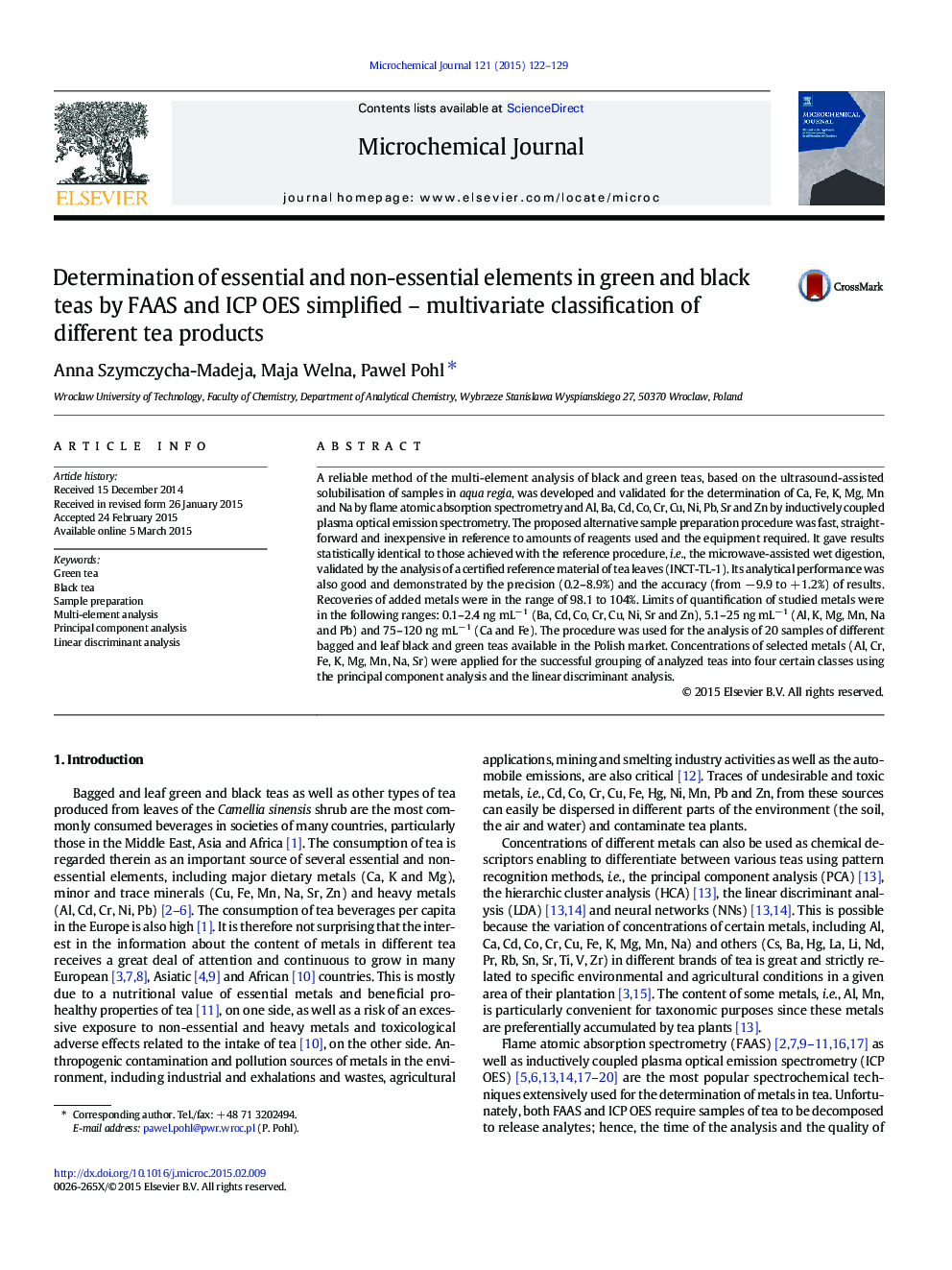| Article ID | Journal | Published Year | Pages | File Type |
|---|---|---|---|---|
| 1227685 | Microchemical Journal | 2015 | 8 Pages |
•Ultrasound-assisted solubilisation of black and green teas in aqua regia was simplified sample preparation procedure•16 metals were determined in 20 bagged and leaf black and green teas by FAAS and ICP OES•PCA and LDA were used for grouping tea samples into 4 different classes•Al, Ba, Cr, Fe, K, Mg, Ni and Sr were metals with the highest discrimination power
A reliable method of the multi-element analysis of black and green teas, based on the ultrasound-assisted solubilisation of samples in aqua regia, was developed and validated for the determination of Ca, Fe, K, Mg, Mn and Na by flame atomic absorption spectrometry and Al, Ba, Cd, Co, Cr, Cu, Ni, Pb, Sr and Zn by inductively coupled plasma optical emission spectrometry. The proposed alternative sample preparation procedure was fast, straightforward and inexpensive in reference to amounts of reagents used and the equipment required. It gave results statistically identical to those achieved with the reference procedure, i.e., the microwave-assisted wet digestion, validated by the analysis of a certified reference material of tea leaves (INCT-TL-1). Its analytical performance was also good and demonstrated by the precision (0.2–8.9%) and the accuracy (from − 9.9 to + 1.2%) of results. Recoveries of added metals were in the range of 98.1 to 104%. Limits of quantification of studied metals were in the following ranges: 0.1–2.4 ng mL− 1 (Ba, Cd, Co, Cr, Cu, Ni, Sr and Zn), 5.1–25 ng mL− 1 (Al, K, Mg, Mn, Na and Pb) and 75–120 ng mL− 1 (Ca and Fe). The procedure was used for the analysis of 20 samples of different bagged and leaf black and green teas available in the Polish market. Concentrations of selected metals (Al, Cr, Fe, K, Mg, Mn, Na, Sr) were applied for the successful grouping of analyzed teas into four certain classes using the principal component analysis and the linear discriminant analysis.
